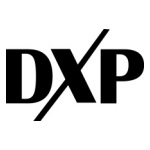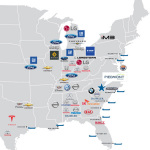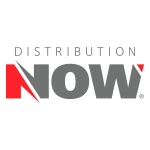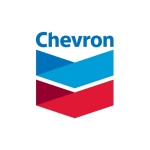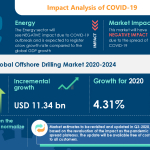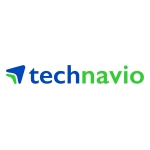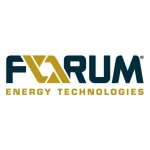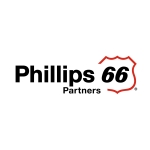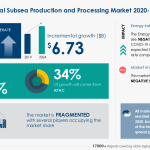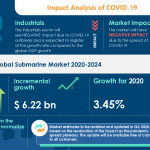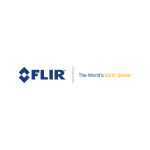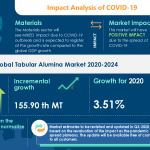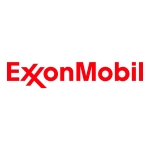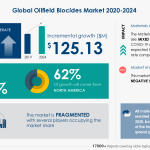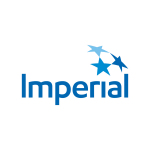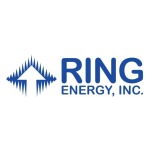-
Reported a third-quarter loss of $799 million or $1.82 per share; adjusted loss of $1 million or $0.01 per share
-
Generated operating cash flow of $491 million; $795 million excluding working capital
-
Captured improved market conditions in Midstream, Chemicals and Marketing & Specialties
-
Recently started operations of Sweeny Fracs 2 and 3
-
Announced San Francisco Refinery conversion into the world’s largest renewable fuels plant
HOUSTON--(BUSINESS WIRE)--#earnings--Phillips 66 (NYSE: PSX), a diversified energy manufacturing and logistics company, announces a third-quarter 2020 loss of $799 million, compared with a loss of $141 million in the second quarter of 2020. Excluding special items of $798 million in the third quarter, primarily an impairment related to the planned conversion of the San Francisco Refinery to a renewable fuels plant, the company had an adjusted loss of $1 million, compared with a second-quarter adjusted loss of $324 million.
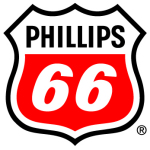
“Our diversified, integrated portfolio helped us navigate a challenging market environment in the third quarter,” said Greg Garland, chairman and CEO of Phillips 66. “Our Midstream, Chemicals and Marketing businesses benefited from improved market conditions, while Refining continued to be impacted by weak margins. We advanced our growth strategy with the recent startup of Sweeny Fracs 2 and 3, marking completion of the Sweeny Hub phase 2 expansion. Also, we announced Rodeo Renewed, a project to reconfigure our San Francisco Refinery into the world’s largest renewable fuels plant, making investments that advance a lower carbon future.
“We are proud of how our employees continue to step up to the challenges of 2020, from the pandemic to the West Coast fires and the Gulf Coast hurricanes. Our response to the storms in particular underscored our commitment to operating excellence, as our facilities were secured and sustained minimal damage. The people of Phillips 66 continue to demonstrate our values of providing energy and improving lives in what has been a very uncertain and challenging environment.
“Our diversified businesses, strong balance sheet and disciplined capital allocation enable us to effectively manage through a low margin environment. We paid $393 million in dividends in the third quarter and are committed to a secure, competitive and growing dividend. We remain focused on creating value for shareholders through operating excellence, financial discipline and return-enhancing investments.”
Midstream
|
Millions of Dollars
|
|
Pre-Tax Income
|
|
Adjusted Pre-Tax Income
|
|
Q3 2020
|
Q2 2020
|
|
Q3 2020
|
Q2 2020
|
Transportation
|
$
|
(3)
|
214
|
|
202
|
130
|
NGL and Other
|
99
|
78
|
|
102
|
83
|
DCP Midstream
|
50
|
32
|
|
50
|
32
|
Midstream
|
$
|
146
|
324
|
|
354
|
245
|
Midstream third-quarter pre-tax income was $146 million, compared with $324 million in the second quarter. Midstream results in the third quarter included a $120 million impairment of pipeline and terminal assets related to the planned conversion of the San Francisco Refinery to a renewable fuels plant, an $84 million impairment related to the cancellation of the Red Oak Pipeline project, $3 million of pension settlement expense and $1 million of hurricane-related costs. Second-quarter results included an $84 million gain related to Phillips 66 Partners’ prior-year sale of an interest in the Gray Oak Pipeline, as well as $5 million of pension settlement expense.
Transportation third-quarter adjusted pre-tax income of $202 million was $72 million higher than the second quarter. The increase was primarily due to higher pipeline and terminal volumes, including ramp-up of volumes on the Gray Oak Pipeline.
NGL and Other adjusted pre-tax income was $102 million in the third quarter, compared with $83 million in the second quarter. The improvement was mainly due to higher Sweeny Hub volumes and inventory impacts.
The company’s equity investment in DCP Midstream, LLC generated third-quarter adjusted pre-tax income of $50 million, an $18 million increase from the prior quarter, mainly reflecting hedging impacts.
Chemicals
|
Millions of Dollars
|
|
Pre-Tax Income
|
|
Adjusted Pre-Tax Income
|
|
Q3 2020
|
Q2 2020
|
|
Q3 2020
|
Q2 2020
|
Olefins and Polyolefins
|
$
|
241
|
70
|
|
148
|
106
|
Specialties, Aromatics and Styrenics
|
11
|
—
|
|
5
|
11
|
Other
|
(21)
|
(28)
|
|
(21)
|
(28)
|
Chemicals
|
$
|
231
|
42
|
|
132
|
89
|
The Chemicals segment reflects Phillips 66’s equity investment in Chevron Phillips Chemical Company LLC (CPChem). Chemicals’ third-quarter 2020 pre-tax income was $231 million, compared with $42 million in the second quarter of 2020. Chemicals results in the third quarter included a $101 million benefit to equity earnings from lower-of-cost-or-market inventory adjustments, partially offset by $2 million of hurricane-related costs. Second-quarter results included reductions to equity earnings of $32 million in lower-of-cost-or-market inventory adjustments, as well as a $15 million asset write-off related to an international joint venture.
CPChem’s Olefins and Polyolefins (O&P) business contributed $148 million of adjusted pre-tax income in the third quarter of 2020, compared with $106 million in the second quarter. The $42 million increase was primarily due to higher polyethylene margins, driven by improved sales prices, partially offset by lower polyethylene volumes and higher operating costs. Global O&P utilization was 94% for the quarter, reflecting downtime at U.S. Gulf Coast facilities.
CPChem’s Specialties, Aromatics and Styrenics (SA&S) business contributed third-quarter adjusted pre-tax income of $5 million, compared with $11 million in the second quarter. The decrease was primarily due to lower margins, partially offset by higher volumes.
The $7 million decrease in Other adjusted net costs in the third quarter mainly reflects lower employee-related expenses.
Refining
|
Millions of Dollars
|
|
Pre-Tax Loss
|
|
Adjusted Pre-Tax Loss
|
|
Q3 2020
|
Q2 2020
|
|
Q3 2020
|
Q2 2020
|
Refining
|
$
|
(1,903)
|
(878)
|
|
(970)
|
(867)
|
Refining had a third-quarter pre-tax loss of $1.9 billion, compared with a pre-tax loss of $878 million in the second quarter. Refining results in the third quarter included a $910 million impairment related to the planned conversion of the San Francisco Refinery to a renewable fuels plant, $12 million of pension settlement expense and $11 million of hurricane-related costs. Second-quarter results included $26 million of pension settlement expense and a $15 million benefit to equity earnings from a lower-of-cost-or-market inventory adjustment.
Refining had an adjusted pre-tax loss of $970 million in the third quarter of 2020, compared with an adjusted pre-tax loss of $867 million in the second quarter of 2020. The decreased results were largely driven by lower realized margins, partially offset by higher volumes. Realized margins were down 32% to $1.78 per barrel in the third quarter, reflecting tightening crude spreads and lower secondary product margins. Phillips 66’s worldwide crude utilization rate was 77% in the third quarter, up from 75% in the second quarter. Improved third-quarter utilization mainly reflects increased refining runs in the Central Corridor and West Coast regions, partially offset by downtime at Gulf Coast refineries, including the impact of hurricane-related third-party power outages at the Lake Charles Refinery.
Pre-tax turnaround costs for the third quarter were $41 million, compared with second-quarter costs of $38 million. Clean product yield was 85% in the third quarter.
Marketing and Specialties
|
Millions of Dollars
|
|
Pre-Tax Income
|
|
Adjusted Pre-Tax Income
|
|
Q3 2020
|
Q2 2020
|
|
Q3 2020
|
Q2 2020
|
Marketing and Other
|
$
|
365
|
255
|
|
366
|
259
|
Specialties
|
|
50
|
31
|
|
51
|
34
|
Marketing and Specialties
|
$
|
415
|
286
|
|
417
|
293
|
Marketing and Specialties (M&S) third-quarter pre-tax income was $415 million, compared with $286 million in the second quarter of 2020. M&S results in the third quarter included hurricane-related costs of $1 million and pension settlement expense of $1 million. Second-quarter results included $4 million of pension settlement expense and a $3 million reduction to equity earnings from a lower-of-cost-or-market inventory adjustment.
Adjusted pre-tax income for Marketing and Other was $366 million in the third quarter of 2020, an increase of $107 million from the second quarter of 2020. The increase primarily reflects higher margins and volumes, driven by improved market conditions and demand recovery. Refined product exports in the third quarter were 139,000 barrels per day (BPD).
Specialties generated third-quarter adjusted pre-tax income of $51 million, up from $34 million in the second quarter. The increase was largely due to higher finished lubricant volumes.
Corporate and Other
|
Millions of Dollars
|
|
Pre-Tax Loss
|
|
Adjusted Pre-Tax Loss
|
|
Q3 2020
|
Q2 2020
|
|
Q3 2020
|
Q2 2020
|
Corporate and Other
|
$
|
(239)
|
(219)
|
|
(213)
|
(224)
|
Corporate and Other third-quarter pre-tax costs were $239 million, compared with pre-tax costs of $219 million in the second quarter. Pre-tax costs in the third quarter included a $25 million asset impairment, and second-quarter pre-tax costs included $8 million of net interest benefits related to tax audit adjustments. Pre-tax costs also included pension settlement expense of $1 million and $3 million in the third quarter and second quarter, respectively.
The $11 million decrease in Corporate and Other adjusted pre-tax costs in the third quarter was mainly driven by lower employee-related expenses, partially offset by higher net interest expense.
Financial Position, Liquidity and Return of Capital
Phillips 66 generated $491 million in cash from operations during the third quarter, including $305 million of cash distributions from equity affiliates. Excluding working capital impacts, operating cash flow was $795 million.
Capital expenditures and investments in the third quarter were $552 million. Excluding $3 million of capital funded by Gray Oak joint venture partners, adjusted capital spending was $549 million. The company expects 2020 consolidated capital expenditures and investments to be $3 billion, and adjusted capital spending to be $2.9 billion, net of cash capital contributions from joint venture partners. Phillips 66 paid $393 million in dividends in the third quarter.
As of Sept. 30, 2020, Phillips 66 had $7 billion of liquidity, reflecting $1.5 billion of cash and cash equivalents and approximately $5.5 billion of total committed capacity under its revolving credit facilities. Consolidated debt was $14.5 billion at Sept. 30, 2020, including $3.8 billion at Phillips 66 Partners (PSXP). The company’s consolidated debt-to-capital ratio was 39% and its net debt-to-capital ratio was 37%. Excluding PSXP, the debt-to-capital ratio was 35% and the net debt-to-capital ratio was 32%.
Strategic Update
Phillips 66 has completed the two new 150,000 BPD fractionators at its Sweeny Hub, bringing the site’s total fractionation capacity to 400,000 BPD. Frac 2 reached full rates in September, and Frac 3 started operations in October. The fractionators are supported by long-term customer commitments.
Phillips 66 Partners continued construction of the C2G Pipeline, a 16 inch ethane pipeline that will connect its Clemens Caverns storage facility to petrochemical facilities in Gregory, Texas, near Corpus Christi, Texas. The project is backed by long-term commitments and is expected to be completed in mid-2021.
At the South Texas Gateway Terminal, which is being constructed by Buckeye Partners, L.P., the first dock and 5.1 million barrels of storage capacity have been commissioned. Marine and terminal operations will continue to ramp up through the end of this year as additional phases of construction are completed. Upon project completion in the first quarter of 2021, the marine export terminal will have two deepwater docks with up to 800,000 BPD of throughput capacity, along with storage capacity of 8.6 million barrels. Phillips 66 Partners owns a 25% interest in the terminal.
The company is adding a 200,000 BPD dock at its Beaumont Terminal, bringing the terminal’s total dock capacity to 800,000 BPD. The new dock is expected to be completed in the fourth quarter of 2020. The terminal has total crude and product storage capacity of 16.8 million barrels.
In Chemicals, CPChem and Qatar Petroleum are jointly pursuing development of petrochemical facilities on the U.S. Gulf Coast and in Ras Laffan, Qatar. CPChem is closely monitoring economic developments and has deferred final investment decision for its U.S. Gulf Coast project.
In October, CPChem announced its first U.S. commercial-scale production of polyethylene from recycled mixed-waste plastics. CPChem is using advanced recycling technology to convert plastic waste to valuable liquids that can become new petrochemicals. CPChem’s circular polyethylene matches the performance and safety specifications of traditional polymers.
Phillips 66 announced Rodeo Renewed, a project to reconfigure its San Francisco Refinery in Rodeo, California, to meet the growing demand for renewable fuels. The plant would no longer produce fuels from crude oil, but instead would make fuels from used cooking oil, fats, greases, soybean oils and other feedstocks. Upon expected completion in early 2024, the facility would have over 50,000 BPD, or 800 million gallons per year, of renewable fuel production capacity, making it the world’s largest facility of its kind. The conversion is expected to reduce the plant’s greenhouse gas emissions by 50% and help California meet its low carbon objectives.
In Marketing, the company continues its program to roll out updated signature image designs for Phillips 66, 76 and Conoco branded sites in the United States. During the quarter, 284 sites were reimaged. Since the program’s inception in 2015, approximately 5,000 sites have been reimaged.
In Europe, the company continues its program to update signature image designs for JET branded sites. During the quarter, 31 sites were reimaged. Since the program’s inception in 2019, 143 sites have been reimaged.
Investor Webcast
Later today, members of Phillips 66 executive management will host a webcast at noon EDT to discuss the company’s third-quarter performance and provide an update on strategic initiatives. To access the webcast and view related presentation materials, go to www.phillips66.com/investors and click on “Events & Presentations.” For detailed supplemental information, go to www.phillips66.com/supplemental.
Earnings (Loss)
|
|
|
|
|
|
|
|
Millions of Dollars
|
|
2020
|
|
2019
|
|
Q3
|
Q2
|
Sep
YTD
|
|
Q3
|
Sep
YTD
|
Midstream
|
$
|
146
|
324
|
(232)
|
|
(460)
|
279
|
Chemicals
|
231
|
42
|
442
|
|
227
|
729
|
Refining
|
(1,903)
|
(878)
|
(5,042)
|
|
856
|
1,641
|
Marketing and Specialties
|
415
|
286
|
1,214
|
|
498
|
1,056
|
Corporate and Other
|
(239)
|
(219)
|
(655)
|
|
(178)
|
(593)
|
Pre-Tax Income (Loss)
|
(1,350)
|
(445)
|
(4,273)
|
|
943
|
3,112
|
Less: Income tax expense (benefit)
|
(624)
|
(378)
|
(1,053)
|
|
150
|
545
|
Less: Noncontrolling interests
|
73
|
74
|
216
|
|
81
|
227
|
Phillips 66
|
$
|
(799)
|
(141)
|
(3,436)
|
|
712
|
2,340
|
|
|
|
|
|
|
|
Adjusted Earnings (Loss)
|
|
|
|
|
|
|
|
Millions of Dollars
|
|
2020
|
|
2019
|
|
Q3
|
Q2
|
Sep
YTD
|
|
Q3
|
Sep
YTD
|
Midstream
|
$
|
354
|
245
|
1,059
|
|
440
|
1,179
|
Chemicals
|
132
|
89
|
414
|
|
269
|
771
|
Refining
|
(970)
|
(867)
|
(2,238)
|
|
839
|
1,603
|
Marketing and Specialties
|
417
|
293
|
1,198
|
|
498
|
1,056
|
Corporate and Other
|
(213)
|
(224)
|
(634)
|
|
(178)
|
(593)
|
Pre-Tax Income (Loss)
|
(280)
|
(464)
|
(201)
|
|
1,868
|
4,016
|
Less: Income tax expense (benefit)
|
(352)
|
(190)
|
(518)
|
|
385
|
821
|
Less: Noncontrolling interests
|
73
|
50
|
192
|
|
81
|
227
|
Phillips 66
|
$
|
(1)
|
(324)
|
125
|
|
1,402
|
2,968
|
About Phillips 66
Phillips 66 is a diversified energy manufacturing and logistics company. With a portfolio of Midstream, Chemicals, Refining, and Marketing and Specialties businesses, the company processes, transports, stores and markets fuels and products globally. Phillips 66 Partners, the company’s master limited partnership, is integral to the portfolio. Headquartered in Houston, the company has 14,500 employees committed to safety and operating excellence. Phillips 66 had $54 billion of assets as of Sept. 30, 2020. For more information, visit www.phillips66.com or follow us on Twitter @Phillips66Co.
CAUTIONARY STATEMENT FOR THE PURPOSES OF THE “SAFE HARBOR” PROVISIONS OF THE PRIVATE SECURITIES LITIGATION REFORM ACT OF 1995
This news release contains certain forward-looking statements within the meaning of Section 27A of the Securities Act of 1933, as amended, and Section 21E of the Securities Exchange Act of 1934, as amended, which are intended to be covered by the safe harbors created thereby. Words and phrases such as “is anticipated,” “is estimated,” “is expected,” “is planned,” “is scheduled,” “is targeted,” “believes,” “continues,” “intends,” “will,” “would,” “objectives,” “goals,” “projects,” “efforts,” “strategies” and similar expressions are used to identify such forward-looking statements. However, the absence of these words does not mean that a statement is not forward-looking. Forward-looking statements included in this news release are based on management’s expectations, estimates and projections as of the date they are made. These statements are not guarantees of future performance and you should not unduly rely on them as they involve certain risks, uncertainties and assumptions that are difficult to predict. Therefore, actual outcomes and results may differ materially from what is expressed or forecast in such forward-looking statements. Factors that could cause actual results or events to differ materially from those described in the forward-looking statements include: the continuing effects of the COVID-19 pandemic and its negative impact on commercial activity and demand for refined petroleum products; the inability to timely obtain or maintain permits necessary for capital projects; changes to worldwide government policies relating to renewable fuels and greenhouse gas emissions that adversely affect programs like the renewable fuel standards program, low carbon fuel standards and tax credits for biofuels; fluctuations in NGL, crude oil, and natural gas prices, and petrochemical and refining margins; unexpected changes in costs for constructing, modifying or operating our facilities; unexpected difficulties in manufacturing, refining or transporting our products; the level and success of drilling and production volumes around our Midstream assets; risks and uncertainties with respect to the actions of actual or potential competitive suppliers and transporters of refined petroleum products, renewable fuels or specialty products; lack of, or disruptions in, adequate and reliable transportation for our NGL, crude oil, natural gas, and refined products; potential liability from litigation or for remedial actions, including removal and reclamation obligations under environmental regulations; failure to complete construction of capital projects on time and within budget; the inability to comply with governmental regulations or make capital expenditures to maintain compliance; limited access to capital or significantly higher cost of capital related to illiquidity or uncertainty in the domestic or international financial markets; potential disruption of our operations due to accidents, weather events, including as a result of climate change, terrorism or cyberattacks; general domestic and international economic and political developments including armed hostilities, expropriation of assets, and other political, economic or diplomatic developments, including those caused by public health issues and international monetary conditions and exchange controls; changes in governmental policies relating to NGL, crude oil, natural gas, refined petroleum products, or renewable fuels pricing, regulation or taxation, including exports; changes in estimates or projections used to assess fair value of intangible assets, goodwill and property and equipment and/or strategic decisions with respect to our asset portfolio that cause impairment charges; investments required, or reduced demand for products, as a result of environmental rules and regulations; changes in tax, environmental and other laws and regulations (including alternative energy mandates); the operation, financing and distribution decisions of equity affiliates we do not control; the impact of adverse market conditions or other similar risks to those identified herein affecting PSXP, as well as the ability of PSXP to successfully execute its growth plans; and other economic, business, competitive and/or regulatory factors affecting Phillips 66’s businesses generally as set forth in our filings with the Securities and Exchange Commission. Phillips 66 is under no obligation (and expressly disclaims any such obligation) to update or alter its forward-looking statements, whether as a result of new information, future events or otherwise.
Use of Non-GAAP Financial Information—This news release includes the terms “adjusted earnings (loss),” “adjusted earnings (loss) per share” and “adjusted pre-tax income (loss).” These are non-GAAP financial measures that are included to help facilitate comparisons of operating performance across periods and to help facilitate comparisons with other companies in our industry, by excluding items that do not reflect the core operating results of our businesses in the current period. This release also includes a “debt-to-capital ratio excluding PSXP.” This non-GAAP measure is provided to differentiate the capital structure of Phillips 66 compared with that of Phillips 66 Partners. This release includes “adjusted capital spending,” a non-GAAP financial measure that demonstrates the portion of total consolidated capital expenditures and investments funded by Phillips 66. This release also includes “realized refining margin,” a non-GAAP financial measure that demonstrates how well we performed relative to benchmark industry margins.
References in the release to total consolidated earnings (loss) refer to net income (loss) attributable to Phillips 66.
|
Millions of Dollars
|
|
Except as Indicated
|
|
2020
|
|
2019
|
|
Q3
|
Q2
|
Sep
YTD
|
|
Q3
|
Sep
YTD
|
Reconciliation of Consolidated Earnings (Loss) to Adjusted Earnings (Loss)
|
|
|
|
|
|
|
Consolidated Earnings (Loss)
|
$
|
(799)
|
(141)
|
(3,436)
|
|
712
|
2,340
|
Pre-tax adjustments:
|
|
|
|
|
|
|
Pending claims and settlements
|
—
|
—
|
(37)
|
|
—
|
(21)
|
Pension settlement expense
|
17
|
38
|
55
|
|
—
|
—
|
Impairments
|
1,139
|
—
|
4,145
|
|
853
|
853
|
Impairments by equity affiliates
|
—
|
15
|
15
|
|
47
|
47
|
Lower-of-cost-or-market inventory adjustments
|
(101)
|
20
|
(29)
|
|
42
|
42
|
Certain tax impacts
|
—
|
(8)
|
(8)
|
|
—
|
—
|
Asset dispositions
|
—
|
(84)
|
(84)
|
|
(17)
|
(17)
|
Hurricane-related costs
|
15
|
—
|
15
|
|
—
|
—
|
Tax impact of adjustments*
|
(262)
|
(208)
|
(545)
|
|
(235)
|
(231)
|
Other tax impacts
|
(10)
|
20
|
10
|
|
—
|
(45)
|
Noncontrolling interests
|
—
|
24
|
24
|
|
—
|
—
|
Adjusted earnings (loss)
|
$
|
(1)
|
(324)
|
125
|
|
1,402
|
2,968
|
Earnings (loss) per share of common stock (dollars)
|
$
|
(1.82)
|
(0.33)
|
(7.83)
|
|
1.58
|
5.13
|
Adjusted earnings (loss) per share of common stock (dollars)†
|
$
|
(0.01)
|
(0.74)
|
0.27
|
|
3.11
|
6.51
|
|
|
|
|
|
|
|
Reconciliation of Segment Pre-Tax Income (Loss) to Adjusted Pre-Tax Income (Loss)
|
|
|
|
|
|
|
Midstream Pre-Tax Income (Loss)
|
$
|
146
|
324
|
(232)
|
|
(460)
|
279
|
Pre-tax adjustments:
|
|
|
|
|
|
|
Impairments
|
204
|
—
|
1,365
|
|
853
|
853
|
Pension settlement expense
|
3
|
5
|
8
|
|
—
|
—
|
Lower-of-cost-or-market inventory adjustments
|
—
|
—
|
1
|
|
—
|
—
|
Impairments by equity affiliates
|
—
|
—
|
—
|
|
47
|
47
|
Asset dispositions
|
—
|
(84)
|
(84)
|
|
—
|
—
|
Hurricane-related costs
|
1
|
—
|
1
|
|
—
|
—
|
Adjusted pre-tax income
|
$
|
354
|
245
|
1,059
|
|
440
|
1,179
|
Chemicals Pre-Tax Income
|
$
|
231
|
42
|
442
|
|
227
|
729
|
Pre-tax adjustments:
|
|
|
|
|
|
|
Lower-of-cost-or-market inventory adjustments
|
(101)
|
32
|
(45)
|
|
42
|
42
|
Impairments by equity affiliates
|
—
|
15
|
15
|
|
—
|
—
|
Hurricane-related costs
|
2
|
—
|
2
|
|
—
|
—
|
Adjusted pre-tax income
|
$
|
132
|
89
|
414
|
|
269
|
771
|
Refining Pre-Tax Income (Loss)
|
$
|
(1,903)
|
(878)
|
(5,042)
|
|
856
|
1,641
|
Pre-tax adjustments:
|
|
|
|
|
|
|
Pending claims and settlements
|
—
|
—
|
—
|
|
—
|
(21)
|
Asset dispositions
|
—
|
—
|
—
|
|
(17)
|
(17)
|
Pension settlement expense
|
12
|
26
|
38
|
|
—
|
—
|
Impairments
|
910
|
—
|
2,755
|
|
—
|
—
|
Lower-of-cost-or-market inventory adjustments
|
—
|
(15)
|
—
|
|
—
|
—
|
Hurricane-related costs
|
11
|
—
|
11
|
|
—
|
—
|
Adjusted pre-tax income (loss)
|
$
|
(970)
|
(867)
|
(2,238)
|
|
839
|
1,603
|
Marketing and Specialties Pre-Tax Income
|
$
|
415
|
286
|
1,214
|
|
498
|
1,056
|
Pre-tax adjustments:
|
|
|
|
|
|
|
Lower-of-cost-or-market inventory adjustments
|
—
|
3
|
15
|
|
—
|
—
|
Pending claims and settlements
|
—
|
—
|
(37)
|
|
—
|
—
|
Pension settlement expense
|
1
|
4
|
5
|
|
—
|
—
|
Hurricane-related costs
|
1
|
—
|
1
|
|
—
|
—
|
Adjusted pre-tax income
|
$
|
417
|
293
|
1,198
|
|
498
|
1,056
|
Corporate and Other Pre-Tax Loss
|
$
|
(239)
|
(219)
|
(655)
|
|
(178)
|
(593)
|
Pre-tax adjustments:
|
|
|
|
|
|
|
Impairments
|
25
|
—
|
25
|
|
—
|
—
|
Pension settlement expense
|
1
|
3
|
4
|
|
—
|
—
|
Certain tax impacts
|
—
|
(8)
|
(8)
|
|
—
|
—
|
Adjusted pre-tax loss
|
$
|
(213)
|
(224)
|
(634)
|
|
(178)
|
(593)
|
*We generally tax effect taxable U.S.-based special items using a combined federal and state annual statutory income tax rate of approximately 25%. Taxable special items attributable to foreign locations likewise use a local statutory income tax rate. Nontaxable events reflect zero income tax. These events include, but are not limited to, most goodwill impairments, transactions legislatively exempt from income tax, transactions related to entities for which we have made an assertion that the undistributed earnings are permanently reinvested, or transactions occurring in jurisdictions with a valuation allowance.
|
†YTD 2020 is based on adjusted weighted-average diluted shares outstanding of 440,156 thousand, and other periods are based on the same weighted-average diluted shares outstanding as that used in the GAAP diluted earnings per share calculation. Income allocated to participating securities, if applicable, in the adjusted earnings per share calculation is the same as that used in the GAAP diluted earnings per share calculation.
|
Contacts
Jeff Dietert (investors)
832-765-2297
This email address is being protected from spambots. You need JavaScript enabled to view it.
Shannon Holy (investors)
832-765-2297
This email address is being protected from spambots. You need JavaScript enabled to view it.
Thaddeus Herrick (media)
855-841-2368
This email address is being protected from spambots. You need JavaScript enabled to view it.
Read full story here 

